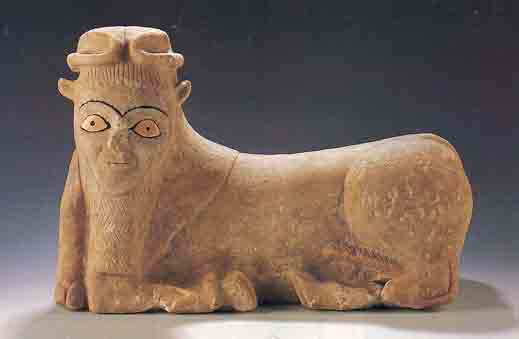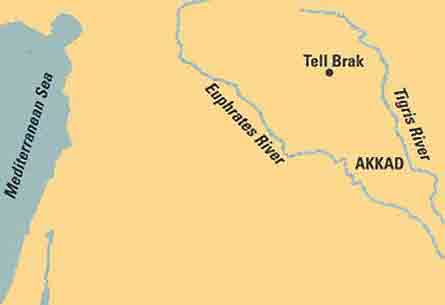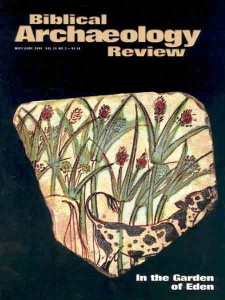
Smiling enigmatically, with a bold, forthright stare, this limestone bull with a human head was probably one of a pair guarding a temple entrance. Even today the eyes (made of ivory pieces held in place by bitumen) have an immediate impact, but how much more impressive they must have been in their original condition—set with precious stones for irises where now there are merely holes. Every aspect of the 17-inch figurine—the stylized horns, the turn of the head, the way the legs are folded along the front of the body—suggests that it was meant to be viewed head-on.

The reclining bull, probably a fertility figure, was discovered in a ceremonial complex at Tell Brak, roughly halfway between the upper reaches of the Tigris and the Euphrates, in the Khabur River basin in northeastern Syria. The Bible mentions the Khabur as one of the places to which the Assyrians exiled the defeated northern Israelites in 721 B.C. (2 Kings 17:6). Tell Brak was first excavated in the 1930s by Sir Max Mallowan, whose wife, mystery writer Agatha Christie, wrote Come Tell Me How You Live, about life on an archaeological dig.
Already a library member? Log in here.
Institution user? Log in with your IP address.

